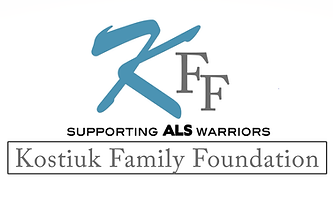
Understanding ALS
Amyotrophic lateral sclerosis (ALS), commonly known as Lou Gehrig’s disease and outside the US as Motor Neuron Disease (MND) or Charcot’s Disease, is a progressive neurodegenerative disease that attacks motor neurons in the brain (upper motor neurons) and spinal cord (lower motor neurons) and affects muscle function.
The motor neurons control the movement of various voluntary muscles including the diaphragm. Associated with the loss of the ability of motor neurons to function in ALS, the various muscles cells waste away (atrophy), resulting in increased muscle weakness. Ultimately, accumulated loss of motor neurons makes it impossible for voluntary control of normal muscle function.
Symptoms of ALS can include twitching and cramping of muscles (called fasciculation), stiffness in muscles (spasticity), increasing loss of motor control in hands and arms and legs, weakness and fatigue, slurred or thick speech and difficulty breathing or swallowing.
In most cases, ALS patients do not typically experience significantly impaired sensory neural functioning, intellectual reasoning, vision or hearing. Eye and bladder muscles, along with sexual function and drive, are not normally affected.
ALS is diagnosed using a variety of tests and examinations, including laboratory tests, muscle and nerve biopsy, spinal tap, X-rays, MRI’s and electrodiagnostic evaluation of axon function.
Currently there is only a single therapy approved for treating ALS progression – the drug Rilutek (riluzole) with the accepted, modest benefit estimated to be a three month extension in patient survival.


Facts You Should Know
-
ALS is not contagious.
-
Although the life expectancy of a person with ALS averages about two to five years from the time of diagnosis, this disease is variable, and many people can live with the disease for five years and more. More than half of all people with ALS live more than three years after diagnosis.
-
Once ALS starts, it almost always progresses, eventually taking away the ability to walk, dress, write, speak, swallow, and breathe and shortening the life span. How fast and in what order this occurs is very different from person to person. While the average survival time is 3 years, about twenty percent of people with ALS live five years, 10 percent will survive ten years and five percent will live 20 years or more.
-
Progression is not always a straight line in an individual either. It is not uncommon to have periods lasting weeks to months where there is very little or no loss of function. There are even very rare examples in which there is significant improvement and recovery of lost function. These ALS "arrests" and "reversals" are unfortunately usually transient. Less than 1% of patients with ALS will have significant improvement in function lasting 12 months or more.
-
Approximately 6,000 people in the U.S. are diagnosed with ALS each year. The incidence of ALS is two per 100,000 people, and it is estimated that more than 20,000 Americans may be living with ALS at any given time.
-
ALS occurs throughout the world with no racial, ethnic or socioeconomic boundaries and can affect anyone.
-
Military veterans are approximately twice as likely to develop ALS.
-
The onset of ALS often involves muscle weakness or stiffness as early symptoms. Progression of weakness, wasting and paralysis of the muscles of the limbs and trunk as well as those that control vital functions such as speech, swallowing and later breathing generally follows.
-
There can be significant costs for medical care, equipment and home health caregiving later in the disease. It is important to be knowledgeable about your health plan coverage and other programs for which you may be eligible, including Social Security Disability, Medicare, Mediciad and Veteran Affairs benefits.
To Learn more about ALS by visiting the following Links: